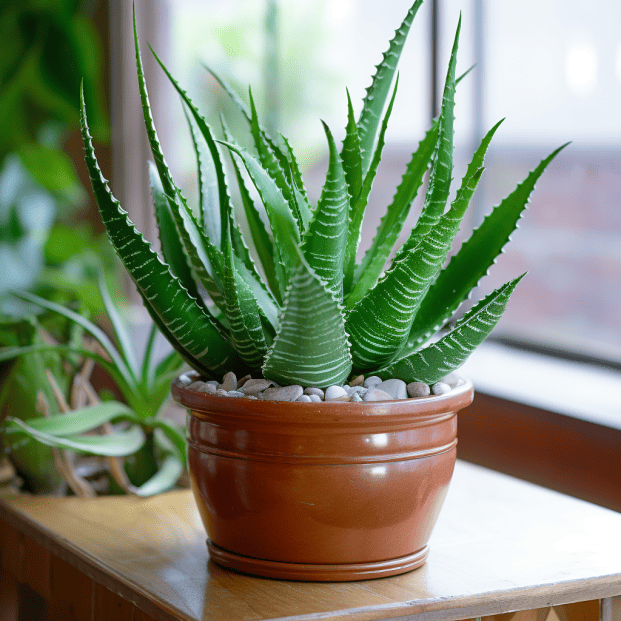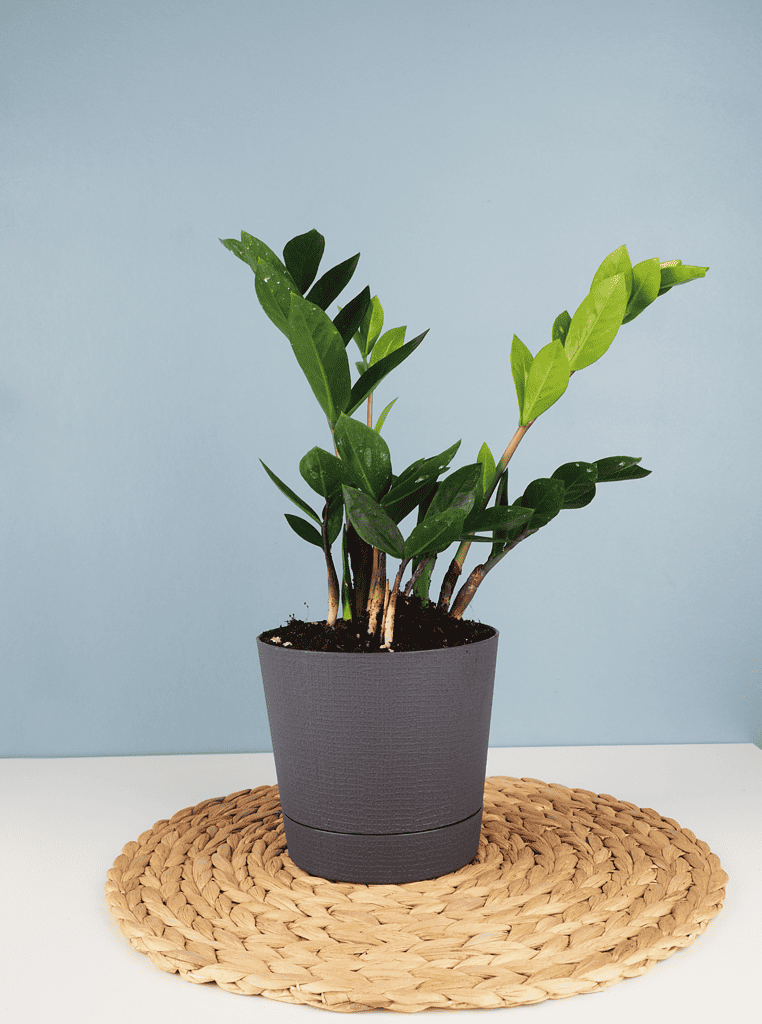Houseplants are not only a great way to add some greenery to your home, but they also offer a variety of health and wellness benefits. In recent years, there has been a growing interest in the use of houseplants as a way to improve indoor air quality, reduce stress, and promote overall well-being.
When selecting houseplants for health and wellness benefits, there are a few things to consider. First, choosing plants that are easy to care for and can thrive in your home environment is essential. This may include taking into account factors such as the amount of natural light your home receives, the humidity levels, and the temperature. Additionally, it is vital to consider any allergies or sensitivities you or your family members may have to certain plants.
Incorporating houseplants into your home can be a simple and effective way to improve your health and well-being. Whether you are looking to purify the air, reduce stress, or simply add some natural beauty to your living space, a variety of plants can help you achieve your goals. With a bit of research and some careful consideration, you can select the perfect houseplants to enhance your home and promote a healthier, happier lifestyle.
Understanding Houseplants and Health
Houseplants have been shown to provide numerous health benefits. Research has shown that indoor plants can help reduce stress levels, increase productivity, and improve air quality. These benefits can have a significant impact on overall health and wellness.
One of the main benefits of houseplants is their ability to improve air quality. Plants are natural air purifiers that can help remove harmful toxins from the air. This is especially important in indoor spaces, where various factors, including poor ventilation and chemicals, can compromise air quality.
In addition to improving air quality, houseplants can also help reduce stress levels. Studies have shown that simply being around plants can have a calming effect on the body and mind. This can lead to a reduction in stress and anxiety, which can have a positive impact on overall health.
Furthermore, houseplants have been found to increase productivity. Researchers have found that having plants in the workplace can increase productivity by up to 15%. This is because plants can help create a more relaxed and comfortable environment, which can lead to increased focus and concentration.
Houseplants can provide numerous health benefits, including improved air quality, reduced stress levels, and increased productivity. Individuals can improve their overall health and wellness by incorporating plants into indoor spaces.


The Science Behind Houseplants and Health
Houseplants have been found to offer several health benefits, backed by scientific research. Researchers have found that indoor plants can positively affect both physiological and mental health. NASA conducted a study in the 1980s, demonstrating that indoor plants could remove toxins from the air, making the air cleaner and healthier to breathe. This study was instrumental in highlighting the importance of indoor plants for health and wellness.
Indoor plants have been found to improve concentration and attention. A study published in the Journal of Environmental Psychology found that having indoor plants in the workspace can improve cognitive function and productivity. The study found that participants who worked in a room with indoor plants performed better on tasks requiring sustained attention than those who worked in a room without plants.
Furthermore, indoor plants have been found to positively affect mental health. A study published in the Journal of Physiological Anthropology found that indoor plants can help reduce stress levels. The study found that participants with indoor plants in their workspace reported feeling more comfortable, soothed, and natural than those without.
In addition, indoor plants have been found to positively affect physiological health. A systematic review with meta-analyses conducted by researchers found that indoor plants can positively influence individuals’ physiological, cognitive, health-related, and behavioral functions. The study found that indoor plants can reduce blood pressure, improve air quality, and boost immune function.
In summary, the science behind houseplants and health is clear. Indoor plants offer several health benefits, including improved concentration and attention, reduced stress levels, and improved physiological health. Incorporating indoor plants into your living or workspace can help create a healthier and more productive environment.
Houseplants and Their Specific Health Benefits
Houseplants are not just aesthetically pleasing but also offer a range of health benefits. They can improve air quality, reduce stress, boost productivity, and even enhance sleep quality. Here are some specific health benefits associated with different types of houseplants:
Anxiety and Stress Reduction
Several studies have shown that indoor plants can help reduce anxiety and stress. Caring for plants and being around their greenery can have a calming effect on the mind and body. Some of the best houseplants for anxiety and stress reduction include:
- Lavender: Known for its soothing fragrance, lavender can help reduce anxiety and improve sleep quality.
- Snake Plant: This plant can remove certain air pollutants and improve indoor air quality, which can help reduce stress levels.
- Peace Lily: With its attractive white blooms, the peace lily can help reduce stress and enhance the quality of air.



Blood Pressure and Heart Rate Regulation
Certain houseplants can help regulate blood pressure and heart rate, which can positively impact overall health. Here are some of the best houseplants for blood pressure and heart rate regulation:
- Aloe Vera: This succulent plant can help regulate blood pressure and improve circulation.
- English Ivy: Known for its ability to remove airborne mold, English Ivy can also help regulate heart rate and blood pressure.
- Spider Plant: This easy-to-care-for plant can remove harmful toxins from the air and help regulate heart rate and blood pressure.



Productivity and Mood Enhancement
Houseplants can also have a positive impact on productivity and mood. They can help improve focus, creativity, and overall well-being. Some of the best houseplants for productivity and mood enhancement include:
- Philodendron: This plant has large, attractive leaves that can help improve air quality and boost productivity.
- Pothos: Its cascading vines and heart-shaped leaves can help reduce stress and improve mood.
- ZZ Plant: This low-maintenance plant can help purify the air and improve focus and productivity.



Humidity and Sleep Quality Improvement
Certain houseplants can help improve humidity levels in the home, which can positively impact sleep quality. Here are some of the best houseplants for humidity and sleep quality improvement:
- Boston Fern: With its lush foliage, the Boston Fern can help improve humidity levels and air quality, leading to better sleep.
- Areca Palm: Known for its ability to remove toxins from the air, the Areca palm can also help improve humidity levels and promote better sleep.
- Rubber Plant: This low-maintenance plant can help improve air quality and humidity levels, leading to better sleep quality.
Overall, incorporating houseplants into your home decor can offer a range of health benefits. From reducing stress and anxiety to improving sleep quality and productivity, there are many ways in which houseplants can enhance overall well-being.



Air-Purifying Houseplants
Houseplants can do more than just add a touch of greenery to your home or office. They can also help purify the air by removing harmful toxins and pollutants. While all plants absorb carbon dioxide and release oxygen, some filter toxic chemicals better than others.
One of the most popular air-purifying houseplants is the spider plant. It is easy to care for and can remove harmful air pollutants like formaldehyde and xylene. The snake plant, also known as mother-in-law’s tongue, is another popular choice. It effectively removes benzene, formaldehyde, trichloroethylene, and xylene from the air.
The Boston fern is another excellent choice for air purification. It effectively removes formaldehyde, benzene, and xylene from the air. English ivy is also a good option, as it can remove formaldehyde, benzene, toluene, and xylene from the air.
Pothos, also known as devil’s ivy, is a popular houseplant that is easy to care for and can remove formaldehyde, benzene, and carbon monoxide from the air. Golden pothos are a variety of pothos with yellow and green leaves, which are just as effective at purifying the air.
Bamboo palm is another great air-purifying houseplant. It can remove formaldehyde, benzene, and trichloroethylene from the air. Peace lily is also effective at removing formaldehyde, benzene, trichloroethylene, ammonia, and xylene.
Other air-purifying houseplants include spider plants, sansevieria trifasciata (also known as snake plant or mother-in-law’s tongue), epipremnum aureum (also known as pothos or devil’s ivy), dracaena (including the popular Janet Craig and marginata varieties), ferns, aloe vera, jade, philodendron, chamaedorea seifrizii, and chlorophytum comosum (also known as spider plant).
Overall, incorporating air-purifying houseplants into your home or office can improve the air quality and provide health and wellness benefits. However, it is important to note that while houseplants can help remove harmful toxins from the air, they are not a substitute for proper ventilation and air filtration systems.
Houseplants and Indoor Air Quality
Houseplants can be a great addition to any home, not just for their aesthetic appeal but also for their health benefits. One of the most notable benefits of houseplants is their ability to improve indoor air quality.
Indoor air quality can be compromised by various factors, including dust, mold, allergens, and volatile organic compounds (VOCs) emitted by household items such as cleaning products, furniture, and even electronics. These pollutants can cause headaches, dizziness, and other health problems.
However, houseplants can help to combat these pollutants by absorbing carbon dioxide and VOCs while releasing oxygen through photosynthesis. Some of the most effective plants for improving indoor air quality include:
- Snake Plant: Known for its ability to remove formaldehyde from the air, it is also low-maintenance and can thrive in various lighting conditions.
- Peace Lily: This plant can help remove mold spores and other allergens from the air while adding a touch of elegance to any room.
- Spider Plant: Effective at removing benzene, formaldehyde, and xylene from the air, this plant is also easy to care for and produces small, attractive flowers.
In addition to removing pollutants from the air, houseplants can also help regulate humidity levels and reduce the risk of mold growth. Some plants, such as the Boston Fern, are particularly effective at removing moisture from the air.
Overall, incorporating houseplants into your home can positively impact your health and well-being by improving indoor air quality and reducing the risk of specific health problems.
Houseplants and Physical Spaces
Indoor plants add aesthetic value to a room and provide health benefits. The physical health benefits of indoor plants have been shown to include reduced blood pressure and reduced fatigue and headaches by 20-25 percent in one study. Patients in hospital rooms with plants reported decreased post-operative pain. It is worth noting that the effect of plant species and cultivar differences has not been specifically investigated.
In addition to the physical benefits, indoor plants can also improve the overall atmosphere of a space. Plants can help reduce stress levels, which is particularly important in high-stress environments such as hospitals or workplaces. They can also improve air quality by removing certain air pollutants such as benzene and formaldehyde.


When selecting houseplants for physical spaces, it is essential to consider the environment in which they will be placed. For example, low-light areas may require plants that thrive in shade, while workspaces may require plants that are easy to care for and do not require too much attention.
It is also essential to consider the potential risks to pets. Some plants, such as lilies, can be toxic to cats and dogs. If you have pets, it is vital to research a plant’s toxicity before bringing it into your home.
Overall, incorporating indoor plants into physical spaces can provide numerous health benefits and improve a room’s overall atmosphere. By selecting the right plants for the environment, individuals can reap the benefits of indoor gardening without sacrificing their pets’ safety or the functionality of their workspace.
Houseplants and Social Media Influence
Houseplants have been growing in popularity in recent years, and social media has played a significant role in promoting their benefits. With hashtags like #plantsofinstagram and #plantparenthood, social media platforms like Instagram have become a hub for plant enthusiasts to share their love for houseplants, benefits, and unique designs.
This social media influence has led to an increase in the number of people interested in owning houseplants. According to a survey by the National Gardening Association, the number of households in the US that participated in indoor gardening increased by 12% between 2016 and 2018, which is expected to continue to rise.
Social media has also helped people become more knowledgeable about the benefits of houseplants. Many influencers and bloggers use their platforms to share information about the air-purifying qualities of plants, their ability to reduce stress and anxiety, and their positive impact on mental health.




However, it is important to note that not all information found on social media is accurate. Some influencers may make exaggerated or false claims about the benefits of certain plants, leading to misconceptions and potentially harmful practices. It is always important to do your own research and consult a professional before deciding about your houseplant selection.
Overall, social media has positively influenced the popularity and knowledge of houseplants. It has provided a platform for enthusiasts to share their love for plants and educate others about their benefits. However, it is essential to approach information found on social media with a critical eye and do your own research before making any decisions about your houseplant selection.
Houseplants and Special Populations
Houseplants can provide numerous health benefits to individuals of all ages and backgrounds. However, certain populations may benefit more from incorporating houseplants into their living spaces. Here are some considerations for special populations:
Children and Kids
Children can benefit from having houseplants in their living spaces. Studies have shown that exposure to nature can improve cognitive function and reduce stress levels in children. Additionally, children can learn about responsibility and nurturing by caring for houseplants.
However, it is important to note that some houseplants can be toxic if ingested. Parents should research and select non-toxic houseplants for their homes and keep toxic plants out of reach of children.

Elderly
Elderly individuals can also benefit from having houseplants in their living spaces. Houseplants can improve air quality, which can be especially important for individuals with respiratory issues. Additionally, caring for houseplants can provide a sense of purpose and improve mental health for elderly individuals.
It is important to consider the physical limitations of elderly individuals when selecting houseplants. Plants that require frequent watering or pruning may be difficult for some elderly individuals to maintain.

Dementia
Studies have shown that exposure to nature can improve cognitive function and reduce stress levels in individuals with dementia. Houseplants can provide a connection to nature and improve the overall well-being of individuals with dementia.
When selecting houseplants for individuals with dementia, it is important to consider the individual’s sensory preferences. Some individuals may prefer plants with bright colors or strong scents, while others prefer more subtle ones.
In conclusion, houseplants can provide numerous health benefits to individuals of all ages and backgrounds. However, it is important to consider the unique needs of special populations when selecting houseplants for their living spaces.
Choosing the Right Houseplant
When choosing the right houseplant for health and wellness benefits, there are a few factors to consider. First and foremost, it’s important to choose a plant that will thrive in the conditions of your home. Consider the light and humidity in the room where the plant will be placed. Some plants, like snake plants and rubber trees, can tolerate low light conditions, while others, like bamboo palms and ferns, prefer bright, indirect sunlight.
Another factor to consider is the level of maintenance required for the plant. Some plants, like spider plants and pothos, are very easy to care for and can tolerate a range of conditions, while others, like English ivy and peace lilies, require more attention and specific care instructions.
It’s also important to consider potential health concerns related to specific plants. While many houseplants are known for their air-purifying properties, some plants, like philodendrons and jade plants, can be toxic to pets if ingested. It’s important to research any potential hazards before bringing a new plant into your home.
Some popular houseplants known for their health and wellness benefits include snake plants, which can improve indoor air quality by removing toxins like formaldehyde and benzene, and aloe vera, which has antibacterial properties and can be used to soothe skin irritations.
Other popular options include the spider plant, known for its ability to remove harmful pollutants from the air, and the bamboo palm, which effectively removes formaldehyde.
Ultimately, the right houseplant for you will depend on your personal preferences and the conditions of your home. With a little research and consideration, you can find a plant that looks great and provides a range of health and wellness benefits.
Conclusion
In conclusion, selecting the right houseplants can provide numerous health and wellness benefits for individuals. Houseplants can help purify the air, reduce stress levels, and improve overall mood and well-being.
When selecting houseplants for health benefits, it is important to consider the plant’s specific needs, as well as the individual’s preferences and lifestyle. Some plants require more sunlight or water than others, and some may be toxic to pets or children.
Individuals should also consider the size and placement of the plant in their home or office. Larger plants may require more space and maintenance, while smaller plants can be placed on desks or shelves for easy care.
Some of the best houseplants for health benefits include the snake plant, spider plant, peace lily, and English ivy. These plants are known for purifying the air and removing harmful toxins.
Incorporating houseplants into a living or working space can provide numerous health and wellness benefits for individuals. By properly selecting the right plants and caring for them, individuals can enjoy improved air quality, reduced stress levels, and a more positive overall mood and well-being.
Frequently Asked Questions
What are the top 10 indoor plants for improving health and wellness?
There are many indoor plants that provide health benefits. Some of the top 10 indoor plants for improving health and wellness include snake plant, peace lily, spider plant, aloe vera, bamboo palm, rubber plant, golden pothos, English ivy, philodendron, and Boston fern. These plants can help improve indoor air quality, reduce stress levels, and boost productivity.
What are the benefits of having indoor plants in your bedroom?
Having indoor plants in your bedroom can provide several benefits. They can help purify the air, improve sleep quality, and reduce stress levels. Certain plants, such as lavender, jasmine, and snake plant, can also promote relaxation and calmness.
What are the disadvantages of having too many indoor plants?
While indoor plants provide several health benefits, having too many plants can also have some disadvantages. Overcrowding can make it difficult for plants to receive enough light and water, leading to poor growth and health. Additionally, too many indoor plants can attract pests and insects and increase the risk of mold growth.
What are some low-maintenance indoor plants that provide health benefits?
If you’re looking for low-maintenance indoor plants that provide health benefits, consider plants such as snake plant, spider plant, ZZ plant, and pothos. These plants require minimal care and can help purify the air and reduce stress levels.
What is the best large indoor plant for improving air quality?
The best large indoor plant for improving air quality is the Ficus tree. This plant is known for its ability to remove pollutants such as formaldehyde, benzene, and trichloroethylene from the air. It is also a low-maintenance plant that can grow up to 10 feet tall.
What plant species have the most health benefits for indoor use?
Several plant species have the most health benefits for indoor use. Snake plant is known for its ability to absorb toxins and produce oxygen, while peace lily can help remove pollutants such as benzene and formaldehyde from the air. Aloe vera is also a popular indoor plant that can help purify the air and provide several health benefits.


